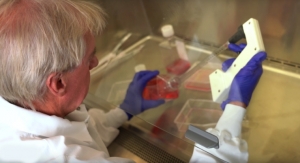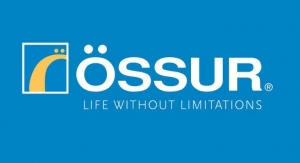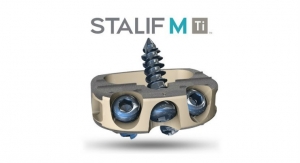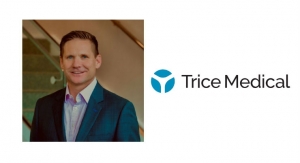Michael Barbella, Managing Editor09.17.19
DiscGenics Inc. & IntraLink-Spine Inc.
He’s considered one of the greats—on par with Tiger Woods, Jason Day, Rory McIlroy, Justin Rose, Danny Willett, and Jamie Lovemark, among others. Even now, seven years removed from the professional touring circuit, mere mention of his name still evokes images of grandeur.
“He was unreal, totally insane,” Lovemark recalled to GOLF Magazine last spring.
“A golf savant,” added Mike Malaska, a GOLF Top 100 teacher based in Scottsdale, Ariz. “You can toss out other names like Mickelson or Seve. But from 100 yards in, Philip Francis was the best I’ve ever seen.”
Indeed, Francis was the best: At 14, he was the top-ranked junior golfer for 65 weeks, during which time he outperformed Woods by winning four consecutive Junior World Golf Championships. Francis also won 147 tournaments throughout his adolescence—including five American Junior Golf Association (AJGA) contests in one season—and was a three-time AJGA 1st Team All-American.
In his prime, Francis seemed virtually unbeatable (McIlroy said as much during a 2017 podcast). But his invincibility began to wane during his college years, as the 2006 Rolex Junior Player of the Year sought strength and power in both his body and swing.
Francis endured years of back pain and tightness before suffering a career-altering torn vertebral disc at the PGA Tour qualifying school in 2012. “It was like an electric bolt shooting up my spine and into my neck,” Francis told GOLF. “The pain was so intense it knocked me to the ground.”
Francis returned to the green after seven months of rehab, but he was never able to recapture his former glory. He’s still linked with legends like Woods, McIlroy and Day, though it’s now through the common thread of injury rather than championships: Day nursed a sore back during his first major, and Rose encountered back problems just a year after capturing Olympic gold in 2016. McIlroy, meanwhile, spent the better part of 2017 recovering from lingering back and rib pain, Lovemark underwent disc replacement surgery in 2011, and Woods underwent four spinal surgeries in three years (the latter, in 2017, was key to his historic comeback and fifth Masters title win in April).
Such health-centric narratives are becoming the norm nowadays as more brawny players wield more powerful swings to drive more hot balls. While these swings certainly have accomplished their mission, they’ve come at a steep price.
“I won’t try to boil it down to a single issue because there’s so much going on and I prefer to take a holistic approach,” golf instructor Sean Foley, who taught Woods and Rose, told GOLF. “But with all the money in the game, look at the players you’re pulling in...there’s Jon Rahm, Adam Scott, Justin Rose, DJ. We’re talking an average of six-foot-two. That used to be a linebacker in the NFL. We know that force equals mass times acceleration. All that force these guys are generating, their bodies have to deal with it, too.”
Their bodies surely deal with it, just not in a good way. A recent study found that more powerful golf swings exert a greater force on spinal discs and facet joints, which over time, leads to a pathogenic process researchers have deemed “repetitive traumatic discopathy,” or RTD.
“We believe that modern-day golfers, particularly elite players who follow intense strength-training regimens to let loose the enormous potential of tightly-wound muscle fibers, are repeatedly traumatizing their lumbar spine,” Barrow Neurological Institute Drs. Corey T. Walker, Juan S. Uribe, and Randall W. Porter wrote in their study, published in February in the Journal of Neurosurgery: Spine.
“This disease process is likely the product of multiple subclinical microstrains on the disc annulus, spinal ligaments, and facet joints rather than a single injury-provoking swing,” the trio noted. “An increasing number of young professional golfers are experiencing low back pain and degenerative disc disease at ages much younger than those of the general adult population.”
From the Disc, For the Disc
For years, golfing legend Tiger Woods was (and in some ways perhaps still is) the unofficial poster boy of recurring back pain. He limped, grimaced, and lumbered his way through more games than he’d care to admit, even collapsing in agony once during a PGA Tour match.
By the time Woods underwent his fourth spinal surgery in April 2017, his back troubles (from degenerative disc disease, or DDD) had become so debilitating that he briefly considered giving up the game he loved. “I was beyond playing,” Woods told ESPN.com. “I couldn’t sit. I couldn’t walk. I couldn’t lay down without feeling the pain in my back and leg. That was a pretty low point for a very long time.”
Spinal fusion surgery helped Woods return to a high point in both his personal and professional lives, enabling him to capture his 15th major title at the 2019 Masters. Such outcomes are rare, however (especially for athletes), as spinal fusions typically are reserved for badly-damaged discs with virtually no hope of redemption through conservative methods (physical therapy, injections, limited activity, medications). Though these procedures can successfully reduce pain levels, they are generally considered temporary fixes, as they fail to address the root cause of lower back pain: the degenerated disc(s).
Salt Lake City-based DiscGenics Inc. is attempting to rectify that shortcoming with its investigational cell therapy, IDCT. Touted as an off-the-shelf, non-surgical approach to DDD treatment, DiscGenics turns donated intervertebral disc tissue into highly specialized therapeutic progenitor (Discogenic) cells that can be used to heal degenerated discs.
The company’s use of Discogenic cells in its technology is based on clinical proof of the cells’ ability to produce the necessary molecules for disc support and structure. Research has shown that Discogenic cells contain the same key regenerative and anti-inflammatory properties found in mesenchymal stem cells, enabling them to immediately begin repairing damaged discs.
“Discogenic Cells begin as disc cells and already know how to behave in a disc environment,” the privately held company states on its website. “Other approaches that use unspecialized cells ... must first adapt to the disc environment before even attempting to affect it.”
DiscGenics’ IDCT is currently under clinical trial evaluation in both the United States and Japan. The American study is being conducted via an investigational new drug allowance by the U.S. Food and Drug Administration (FDA); if approved, the product is likely to be regulated as a drug-biologic through a biologics license application. The Japanese analysis, meanwhile, is supported by a Clinical Trial Notification approved by the Japanese Pharmaceuticals and Medical Devices Agency. Primary outcome measures for both trials are safety and pain reduction, while secondary outcome measures include disability reduction and radiographic improvement.
The clinical trial in Japan will be conducted in six centers and enroll 38 patients. Eligible subjects will be randomized to one of three treatment cohorts: low dose IDCT, high dose IDCT, and sham. IDCT treatment in the Japanese clinical trial began in early August, just a few weeks before the FDA granted Fast Track designation to the therapy. The FDA’s Fast Track program facilitates the expedited development and review of new drugs or biologics that treat serious or life-threatening conditions and address unmet medical needs.
“We are thrilled to receive Fast Track designation for IDCT as it recognizes the compelling pre-clinical and safety data we have generated for IDCT through our research and development and clinical programs, and underscores FDA’s acknowledgement of low back pain as a serious medical condition with a profound lack of treatment options,” DiscGenics Chairman and CEO Flagg Flanagan said in an Aug. 26 news release. “This Fast Track designation reinforces our commitment to working with regulators to identify ways to accelerate development and expedite approval of the therapy within existing regulatory frameworks to make IDCT available to patients as quickly as possible.”
Intervertebral Réjuve-nation
Jason Day’s professional career is beginning to mirror that of Tiger Woods. And not in a good way.
Like Woods, Day is a PGA champion, a multiple WGC Match Play title winner, and a former World No. 1 in the official World Golf Ranking (he made the list at age 27, Woods earned his spot at age 21).
But, like Woods, Day is also a long-suffering back pain victim, having battled soreness, tightness, and often incapacitating agony over the last two decades. His L4 and L5 discs have given him particular trouble in recent years, forcing his withdrawal in 2016 from the BMW and PGA Tour championships, and this past March from the first round of the Arnold Palmer Invitational.
Day’s most recent L4-L5 affliction is an annular tear, an injury that can take between 18 and 24 months to heal on its own. Conservative treatment approaches include anti-inflammatory medications (to relieve the pressure), steroid injections (pain relief), regular chiropractic treatments, spinal traction therapy, and physical therapy. More serious cases require surgical intervention—either sealing off the tear (by laser), or removing loose disc fragments (endoscopic discectomy). Disc replacement or spinal fusion is usually reserved only for the most severe injuries.
It’s unclear whether Day will pursue conservative annular tear treatment, go under the knife, or let the injury heal on its own. Though he rebounded from the Arnold Palmer Invitational to tie for eighth at The Players, and tie for fifth at the Masters, Day was still wracked with nagging back pain during the latter event. He received chiropractic treatment on the green, and in the weeks afterwards, resumed balloon therapy to loosen his rib cage (Day claims that blowing into balloons helps align his rib cage, hips, and shoulders, thus alleviating pressure on his back).
“Sometimes I wake up and I feel like I’m 50, sometimes I wake up and I feel like I’m 70, and sometimes I wake up and feel like I’m 18 again,” Day told USA Today during the Masters. “It can be very depressing and emotional at times. I’m just doing whatever I can to feel good, so if blowing in balloons is what I need to do to feel good, then I will do it all day long.”
Day, however, might want to consider an easier alternative. Lexington, Ky.-based Intralink-Spine Inc. has developed a patented non-surgical injectable called Réjuve that mechanically reinforces spinal discs, strengthens tissue, resists tears, and stabilizes problematic spinal joints. Réjuve works by promoting fibrous protein crosslinking (including collagen) to rejuvenate the spinal disc.
Clinical studies have shown the product is “fast-acting” and lasting: After six months, 80 percent of patients reported a 50 percent decrease in their pain and disability levels, and the treatment effects seen at two weeks post-procedure continued or improved through six months in 80 percent of treated patients, according to the company.
“The data from our early safety and feasibility study demonstrated exceptional results with regard to reducing or eliminating low back pain and disability,” said Dr. Tom Hedman, Ph.D., Réjuve inventor and adjunct associate professor in the F. Joseph Halcomb III M.D. Department of Biomedical Engineering at the University of Kentucky. “These benefits began within days of the initial procedure, demonstrating the immediate mechanical support provided by this device.”
Intralink-Spine executives are expecting similar results from the firm’s Australian clinical trials, which began in early spring (convenient for Day, a native Queenslander).
Réjuve is designed to treat patients with lower back problems like degenerative disc disease; it is under development as a possible stand-alone treatment, administered in an outpatient setting, or as an adjunct to surgery.
“There remains a great need for a simple, effective, and cost-effective treatment for discogenic back pain. Spinal fusion is indicated for the few, but not the many. At Genesis Research, we are very excited to be involved in this clinical trial, which holds much hope for low back pain sufferers,” noted Dr. Marc Russo, medical director of Genesis Research Services, an Australian organization that conducts clinical trials for various conditions, including degenerative disc disease. “I have seen many attempts at providing pain relief solutions for this large group of patients but strengthening the disc AND providing pain relief is a very attractive combination of attributes.”
Camber Spine & Vertiflex Inc.
It fit.
Was there ever any doubt?
Not so much about the fit, really. The jackets always fit nicely.
This year’s doubts actually stemmed from the body inside the jacket—specifically, whether that body was even capable of donning the Augusta National Golf Club’s iconic green blazer.
That body put all doubts to rest in April by pulling off one of the greatest comebacks in golf, winning its fifth Masters title and 15th major tournament victory. The feat instantly catapulted its owner back to the top of the sports world.
“It’s unreal for me to experience this,” Tiger Woods said of his astonishing triumph. “It’s overwhelming just because of what’s transpired.”
A lot has transpired since Woods last donned the green blazer in 2008: a very public breakup and divorce, a DUI arrest, multiple knee surgeries, and four spinal procedures that left him doubting his ability to ever again swing a golf club.
Ironically, that fourth procedure—a spinal fusion—was key to the 43-year-old’s recovery and historic comeback. In April 2017, Woods underwent a minimally invasive Anterior Lumbar Interbody Fusion (ALIF) at L5/S1. The surgery entailed removing the damaged disc and re-elevating the collapsed disc space to normal levels—i.e., basically allowing one vertebrae to heal the other. The procedure typically is conducted to relieve pressure on the affected nerve so it can heal.
Although the procedure itself is not new, advancements in ALIF techniques, instrumentation, and implants have allowed surgeons to perform the operation from the front. This approach shields the lower back muscles from impact during surgery, allowing for both better fusion rates and potentially a quicker return to high-level activities.
“The idea is to reduce motion at the level that is causing the most pain,” Todd J. Albert, orthopedic spine surgeon and surgeon-in-chief at the Hospital for Special Surgery in New York, N.Y., told NBC News after Woods’ Masters win. “In essence by repairing that vertebrae you are taking that sick motion out of the matrix where he [Woods] was repeatedly injuring himself. It was the right procedure for him.”
And for many others since then.
Front Line Fixes
Like most innovations, the ENZA spinal implant was born of frustration.
Jeffrey Gleimer, M.D., wanted better screw fixation. Neurosurgeon Jayme Trahan fancied a better inserter. Some of their peers, meanwhile, longed for improved bone growth. And others coveted reduced retraction during implantation.
The ENZA platform from Camber Spine addresses all these frustrations, as it improves both fixation and bone integration, and minimizes retraction. The company’s ENZA Zero-Profile ALIF (anterior lumbar interbody fusion) device is intended for use with autogenous bone graft in patients suffering from degenerative disc disease at one or two contiguous levels from L2 to S1.
Launched in July 2016, the ENZA Zero-Profile ALIF aims to improve patient safety by minimizing the retraction necessary for implantation. King of Prussia, Pa.-based Camber notes on its website that the implant is “designed for the access surgeon” because clinicians can insert and deploy the device with one instrument.
“I have extensive experience using the Globus Independence, Zimmer-LDR ROI-A, and other ALIF devices from Renovis and Titan Spine,” said orthopedic surgeon Steven B. Wolf, M.D., of Camp Hill, Pa. “The ENZA has been an indispensable alternative to all those implants. I can insert ENZA and deploy fixation with one instrument and I have the reassurance that I can easily remove it if needed.
With the insertion of ENZA the patient’s spine feels immediate stabilization, especially if they need to be flipped for posterior instrumentation. Our access surgeon loves this implant, because it makes his job much easier. ENZA’s single-instrument deployment, without extra retraction of the vessels, eliminates the need for passing multiple locking instrumentation required by other devices.”
Camber’s ENZA-A Titanium ALIF system is similar to the Zero Profile device, but features two sharpened anchor plates that are housed within a 3D-printed body until their vertebral deployment.
Greenlighted by the U.S. Food and Drug Administration last spring, the ENZA-A system comes with single, inline instrumentation to insert the device, deploy the anchor plates, and lock it in place.
“I used a handful of products before I transitioned to using the Camber product. I was looking for a more streamlined inserter,” Trahan, M.D., of Lafayette, La., stated in a company-sponsored online video. “With their inserter, it’s very streamlined. Everything can work through a very small corridor, whereas before you would need larger surface areas...so that makes the incision smaller, that’s less tissue trauma, and that’s less intraoperative bleeding.”
In addition to its single instrumentation, the ENZA-A implant has a roughened surface that encourages bone growth on its cranial and caudal surfaces. The upper and lower faces, according to Camber, are deliberately designed with pores that average 500 micros in diameter, the optimal environment for bone ingrowth. The device also has multiple openings to allow a large volume of autogenous bone graft to be easily packed into the implant to further facilitate fusion.
Smart Spaces
The KISS principle—Keep it Simple, Stupid—is generally not held in high regard within the medical technology field.
It’s not such an awful doctrine, though. It can, in fact, inspire some truly unique innovations.
Consider, for example, the Superion System from Vertiflex Inc. Approved by the U.S. Food and Drug Administration in 2015, the product relieves lower back and leg pain by creating space between the spinous vertebrae processes.
It’s that simple (but certainly not stupid).
Acting as an indirect decompression device, the space created by the Superion system reduces pressure on the nerves, helping improve mobility and relieving leg pain, cramping, and numbness. The product was designed for patients with moderate degenerative lumbar spinal stenosis who have exhausted conservative treatments (oral pain medication, steroid injections) but do not need spinal fusion or a laminectomy.
The Superion’s anatomic design relieves nerve pressure in the same manner a patient would find relief in a seated or flexed position. The product is available in multiple sizes to accommodate anatomical variations, and it minimizes post-procedure complications.
The Superion System has been shown to be a safe and effective treatment option: Eighty-four percent of degenerative lumbar spinal stenosis patients treated with Vertiflex’s technology experienced clinical success with symptom severity, physical function, and/or overall satisfaction. Ninety percent of patients were satisfied with the treatment, and the Superion therapy successfully treated leg pain in 80 percent of subjects in the long-term follow-up cohort. In addition, data published last fall showed an 85 percent decrease in the proportion of patients using opioids five years after Superion treatment.
“Five-year clinical data and real-world experience with the Superion Sytem demonstrate that this minimally invasive and reversible procedure—done without destabilizing the spine–can offer patients long-term pain relief with a relatively rapid recovery time,” Vertiflex president and CEO Earl Fender said in a news release.
Perhaps intrigued by the opioid data, Boston Scientific Corp. purchased Vertiflex in May for $465 million. The deal is expected to expand Boston Scientific’s portfolio of interventional pain therapies.
“The acquisition of Vertiflex and the Superion System will further our category leadership strategy by expanding the breadth of our pain management product offerings,” said Maulik Nanavaty, president, Neuromodulation, Boston Scientific. “The addition of this differentiated technology, along with our spinal cord stimulation and radiofrequency ablation technologies, will provide physicians with a variety of solutions available to manage the growing number of patients suffering from chronic pain.”
He’s considered one of the greats—on par with Tiger Woods, Jason Day, Rory McIlroy, Justin Rose, Danny Willett, and Jamie Lovemark, among others. Even now, seven years removed from the professional touring circuit, mere mention of his name still evokes images of grandeur.
“He was unreal, totally insane,” Lovemark recalled to GOLF Magazine last spring.
“A golf savant,” added Mike Malaska, a GOLF Top 100 teacher based in Scottsdale, Ariz. “You can toss out other names like Mickelson or Seve. But from 100 yards in, Philip Francis was the best I’ve ever seen.”
Indeed, Francis was the best: At 14, he was the top-ranked junior golfer for 65 weeks, during which time he outperformed Woods by winning four consecutive Junior World Golf Championships. Francis also won 147 tournaments throughout his adolescence—including five American Junior Golf Association (AJGA) contests in one season—and was a three-time AJGA 1st Team All-American.
In his prime, Francis seemed virtually unbeatable (McIlroy said as much during a 2017 podcast). But his invincibility began to wane during his college years, as the 2006 Rolex Junior Player of the Year sought strength and power in both his body and swing.
Francis endured years of back pain and tightness before suffering a career-altering torn vertebral disc at the PGA Tour qualifying school in 2012. “It was like an electric bolt shooting up my spine and into my neck,” Francis told GOLF. “The pain was so intense it knocked me to the ground.”
Francis returned to the green after seven months of rehab, but he was never able to recapture his former glory. He’s still linked with legends like Woods, McIlroy and Day, though it’s now through the common thread of injury rather than championships: Day nursed a sore back during his first major, and Rose encountered back problems just a year after capturing Olympic gold in 2016. McIlroy, meanwhile, spent the better part of 2017 recovering from lingering back and rib pain, Lovemark underwent disc replacement surgery in 2011, and Woods underwent four spinal surgeries in three years (the latter, in 2017, was key to his historic comeback and fifth Masters title win in April).
Such health-centric narratives are becoming the norm nowadays as more brawny players wield more powerful swings to drive more hot balls. While these swings certainly have accomplished their mission, they’ve come at a steep price.
“I won’t try to boil it down to a single issue because there’s so much going on and I prefer to take a holistic approach,” golf instructor Sean Foley, who taught Woods and Rose, told GOLF. “But with all the money in the game, look at the players you’re pulling in...there’s Jon Rahm, Adam Scott, Justin Rose, DJ. We’re talking an average of six-foot-two. That used to be a linebacker in the NFL. We know that force equals mass times acceleration. All that force these guys are generating, their bodies have to deal with it, too.”
Their bodies surely deal with it, just not in a good way. A recent study found that more powerful golf swings exert a greater force on spinal discs and facet joints, which over time, leads to a pathogenic process researchers have deemed “repetitive traumatic discopathy,” or RTD.
“We believe that modern-day golfers, particularly elite players who follow intense strength-training regimens to let loose the enormous potential of tightly-wound muscle fibers, are repeatedly traumatizing their lumbar spine,” Barrow Neurological Institute Drs. Corey T. Walker, Juan S. Uribe, and Randall W. Porter wrote in their study, published in February in the Journal of Neurosurgery: Spine.
“This disease process is likely the product of multiple subclinical microstrains on the disc annulus, spinal ligaments, and facet joints rather than a single injury-provoking swing,” the trio noted. “An increasing number of young professional golfers are experiencing low back pain and degenerative disc disease at ages much younger than those of the general adult population.”
From the Disc, For the Disc
For years, golfing legend Tiger Woods was (and in some ways perhaps still is) the unofficial poster boy of recurring back pain. He limped, grimaced, and lumbered his way through more games than he’d care to admit, even collapsing in agony once during a PGA Tour match.
By the time Woods underwent his fourth spinal surgery in April 2017, his back troubles (from degenerative disc disease, or DDD) had become so debilitating that he briefly considered giving up the game he loved. “I was beyond playing,” Woods told ESPN.com. “I couldn’t sit. I couldn’t walk. I couldn’t lay down without feeling the pain in my back and leg. That was a pretty low point for a very long time.”
Spinal fusion surgery helped Woods return to a high point in both his personal and professional lives, enabling him to capture his 15th major title at the 2019 Masters. Such outcomes are rare, however (especially for athletes), as spinal fusions typically are reserved for badly-damaged discs with virtually no hope of redemption through conservative methods (physical therapy, injections, limited activity, medications). Though these procedures can successfully reduce pain levels, they are generally considered temporary fixes, as they fail to address the root cause of lower back pain: the degenerated disc(s).
Salt Lake City-based DiscGenics Inc. is attempting to rectify that shortcoming with its investigational cell therapy, IDCT. Touted as an off-the-shelf, non-surgical approach to DDD treatment, DiscGenics turns donated intervertebral disc tissue into highly specialized therapeutic progenitor (Discogenic) cells that can be used to heal degenerated discs.
The company’s use of Discogenic cells in its technology is based on clinical proof of the cells’ ability to produce the necessary molecules for disc support and structure. Research has shown that Discogenic cells contain the same key regenerative and anti-inflammatory properties found in mesenchymal stem cells, enabling them to immediately begin repairing damaged discs.
“Discogenic Cells begin as disc cells and already know how to behave in a disc environment,” the privately held company states on its website. “Other approaches that use unspecialized cells ... must first adapt to the disc environment before even attempting to affect it.”
DiscGenics’ IDCT is currently under clinical trial evaluation in both the United States and Japan. The American study is being conducted via an investigational new drug allowance by the U.S. Food and Drug Administration (FDA); if approved, the product is likely to be regulated as a drug-biologic through a biologics license application. The Japanese analysis, meanwhile, is supported by a Clinical Trial Notification approved by the Japanese Pharmaceuticals and Medical Devices Agency. Primary outcome measures for both trials are safety and pain reduction, while secondary outcome measures include disability reduction and radiographic improvement.
The clinical trial in Japan will be conducted in six centers and enroll 38 patients. Eligible subjects will be randomized to one of three treatment cohorts: low dose IDCT, high dose IDCT, and sham. IDCT treatment in the Japanese clinical trial began in early August, just a few weeks before the FDA granted Fast Track designation to the therapy. The FDA’s Fast Track program facilitates the expedited development and review of new drugs or biologics that treat serious or life-threatening conditions and address unmet medical needs.
“We are thrilled to receive Fast Track designation for IDCT as it recognizes the compelling pre-clinical and safety data we have generated for IDCT through our research and development and clinical programs, and underscores FDA’s acknowledgement of low back pain as a serious medical condition with a profound lack of treatment options,” DiscGenics Chairman and CEO Flagg Flanagan said in an Aug. 26 news release. “This Fast Track designation reinforces our commitment to working with regulators to identify ways to accelerate development and expedite approval of the therapy within existing regulatory frameworks to make IDCT available to patients as quickly as possible.”
Intervertebral Réjuve-nation
Jason Day’s professional career is beginning to mirror that of Tiger Woods. And not in a good way.
Like Woods, Day is a PGA champion, a multiple WGC Match Play title winner, and a former World No. 1 in the official World Golf Ranking (he made the list at age 27, Woods earned his spot at age 21).
But, like Woods, Day is also a long-suffering back pain victim, having battled soreness, tightness, and often incapacitating agony over the last two decades. His L4 and L5 discs have given him particular trouble in recent years, forcing his withdrawal in 2016 from the BMW and PGA Tour championships, and this past March from the first round of the Arnold Palmer Invitational.
Day’s most recent L4-L5 affliction is an annular tear, an injury that can take between 18 and 24 months to heal on its own. Conservative treatment approaches include anti-inflammatory medications (to relieve the pressure), steroid injections (pain relief), regular chiropractic treatments, spinal traction therapy, and physical therapy. More serious cases require surgical intervention—either sealing off the tear (by laser), or removing loose disc fragments (endoscopic discectomy). Disc replacement or spinal fusion is usually reserved only for the most severe injuries.
It’s unclear whether Day will pursue conservative annular tear treatment, go under the knife, or let the injury heal on its own. Though he rebounded from the Arnold Palmer Invitational to tie for eighth at The Players, and tie for fifth at the Masters, Day was still wracked with nagging back pain during the latter event. He received chiropractic treatment on the green, and in the weeks afterwards, resumed balloon therapy to loosen his rib cage (Day claims that blowing into balloons helps align his rib cage, hips, and shoulders, thus alleviating pressure on his back).
“Sometimes I wake up and I feel like I’m 50, sometimes I wake up and I feel like I’m 70, and sometimes I wake up and feel like I’m 18 again,” Day told USA Today during the Masters. “It can be very depressing and emotional at times. I’m just doing whatever I can to feel good, so if blowing in balloons is what I need to do to feel good, then I will do it all day long.”
Day, however, might want to consider an easier alternative. Lexington, Ky.-based Intralink-Spine Inc. has developed a patented non-surgical injectable called Réjuve that mechanically reinforces spinal discs, strengthens tissue, resists tears, and stabilizes problematic spinal joints. Réjuve works by promoting fibrous protein crosslinking (including collagen) to rejuvenate the spinal disc.
Clinical studies have shown the product is “fast-acting” and lasting: After six months, 80 percent of patients reported a 50 percent decrease in their pain and disability levels, and the treatment effects seen at two weeks post-procedure continued or improved through six months in 80 percent of treated patients, according to the company.
“The data from our early safety and feasibility study demonstrated exceptional results with regard to reducing or eliminating low back pain and disability,” said Dr. Tom Hedman, Ph.D., Réjuve inventor and adjunct associate professor in the F. Joseph Halcomb III M.D. Department of Biomedical Engineering at the University of Kentucky. “These benefits began within days of the initial procedure, demonstrating the immediate mechanical support provided by this device.”
Intralink-Spine executives are expecting similar results from the firm’s Australian clinical trials, which began in early spring (convenient for Day, a native Queenslander).
Réjuve is designed to treat patients with lower back problems like degenerative disc disease; it is under development as a possible stand-alone treatment, administered in an outpatient setting, or as an adjunct to surgery.
“There remains a great need for a simple, effective, and cost-effective treatment for discogenic back pain. Spinal fusion is indicated for the few, but not the many. At Genesis Research, we are very excited to be involved in this clinical trial, which holds much hope for low back pain sufferers,” noted Dr. Marc Russo, medical director of Genesis Research Services, an Australian organization that conducts clinical trials for various conditions, including degenerative disc disease. “I have seen many attempts at providing pain relief solutions for this large group of patients but strengthening the disc AND providing pain relief is a very attractive combination of attributes.”
Camber Spine & Vertiflex Inc.
It fit.
Was there ever any doubt?
Not so much about the fit, really. The jackets always fit nicely.
This year’s doubts actually stemmed from the body inside the jacket—specifically, whether that body was even capable of donning the Augusta National Golf Club’s iconic green blazer.
That body put all doubts to rest in April by pulling off one of the greatest comebacks in golf, winning its fifth Masters title and 15th major tournament victory. The feat instantly catapulted its owner back to the top of the sports world.
“It’s unreal for me to experience this,” Tiger Woods said of his astonishing triumph. “It’s overwhelming just because of what’s transpired.”
A lot has transpired since Woods last donned the green blazer in 2008: a very public breakup and divorce, a DUI arrest, multiple knee surgeries, and four spinal procedures that left him doubting his ability to ever again swing a golf club.
Ironically, that fourth procedure—a spinal fusion—was key to the 43-year-old’s recovery and historic comeback. In April 2017, Woods underwent a minimally invasive Anterior Lumbar Interbody Fusion (ALIF) at L5/S1. The surgery entailed removing the damaged disc and re-elevating the collapsed disc space to normal levels—i.e., basically allowing one vertebrae to heal the other. The procedure typically is conducted to relieve pressure on the affected nerve so it can heal.
Although the procedure itself is not new, advancements in ALIF techniques, instrumentation, and implants have allowed surgeons to perform the operation from the front. This approach shields the lower back muscles from impact during surgery, allowing for both better fusion rates and potentially a quicker return to high-level activities.
“The idea is to reduce motion at the level that is causing the most pain,” Todd J. Albert, orthopedic spine surgeon and surgeon-in-chief at the Hospital for Special Surgery in New York, N.Y., told NBC News after Woods’ Masters win. “In essence by repairing that vertebrae you are taking that sick motion out of the matrix where he [Woods] was repeatedly injuring himself. It was the right procedure for him.”
And for many others since then.
Front Line Fixes
Like most innovations, the ENZA spinal implant was born of frustration.
Jeffrey Gleimer, M.D., wanted better screw fixation. Neurosurgeon Jayme Trahan fancied a better inserter. Some of their peers, meanwhile, longed for improved bone growth. And others coveted reduced retraction during implantation.
The ENZA platform from Camber Spine addresses all these frustrations, as it improves both fixation and bone integration, and minimizes retraction. The company’s ENZA Zero-Profile ALIF (anterior lumbar interbody fusion) device is intended for use with autogenous bone graft in patients suffering from degenerative disc disease at one or two contiguous levels from L2 to S1.
Launched in July 2016, the ENZA Zero-Profile ALIF aims to improve patient safety by minimizing the retraction necessary for implantation. King of Prussia, Pa.-based Camber notes on its website that the implant is “designed for the access surgeon” because clinicians can insert and deploy the device with one instrument.
“I have extensive experience using the Globus Independence, Zimmer-LDR ROI-A, and other ALIF devices from Renovis and Titan Spine,” said orthopedic surgeon Steven B. Wolf, M.D., of Camp Hill, Pa. “The ENZA has been an indispensable alternative to all those implants. I can insert ENZA and deploy fixation with one instrument and I have the reassurance that I can easily remove it if needed.
With the insertion of ENZA the patient’s spine feels immediate stabilization, especially if they need to be flipped for posterior instrumentation. Our access surgeon loves this implant, because it makes his job much easier. ENZA’s single-instrument deployment, without extra retraction of the vessels, eliminates the need for passing multiple locking instrumentation required by other devices.”
Camber’s ENZA-A Titanium ALIF system is similar to the Zero Profile device, but features two sharpened anchor plates that are housed within a 3D-printed body until their vertebral deployment.
Greenlighted by the U.S. Food and Drug Administration last spring, the ENZA-A system comes with single, inline instrumentation to insert the device, deploy the anchor plates, and lock it in place.
“I used a handful of products before I transitioned to using the Camber product. I was looking for a more streamlined inserter,” Trahan, M.D., of Lafayette, La., stated in a company-sponsored online video. “With their inserter, it’s very streamlined. Everything can work through a very small corridor, whereas before you would need larger surface areas...so that makes the incision smaller, that’s less tissue trauma, and that’s less intraoperative bleeding.”
In addition to its single instrumentation, the ENZA-A implant has a roughened surface that encourages bone growth on its cranial and caudal surfaces. The upper and lower faces, according to Camber, are deliberately designed with pores that average 500 micros in diameter, the optimal environment for bone ingrowth. The device also has multiple openings to allow a large volume of autogenous bone graft to be easily packed into the implant to further facilitate fusion.
Smart Spaces
The KISS principle—Keep it Simple, Stupid—is generally not held in high regard within the medical technology field.
It’s not such an awful doctrine, though. It can, in fact, inspire some truly unique innovations.
Consider, for example, the Superion System from Vertiflex Inc. Approved by the U.S. Food and Drug Administration in 2015, the product relieves lower back and leg pain by creating space between the spinous vertebrae processes.
It’s that simple (but certainly not stupid).
Acting as an indirect decompression device, the space created by the Superion system reduces pressure on the nerves, helping improve mobility and relieving leg pain, cramping, and numbness. The product was designed for patients with moderate degenerative lumbar spinal stenosis who have exhausted conservative treatments (oral pain medication, steroid injections) but do not need spinal fusion or a laminectomy.
The Superion’s anatomic design relieves nerve pressure in the same manner a patient would find relief in a seated or flexed position. The product is available in multiple sizes to accommodate anatomical variations, and it minimizes post-procedure complications.
The Superion System has been shown to be a safe and effective treatment option: Eighty-four percent of degenerative lumbar spinal stenosis patients treated with Vertiflex’s technology experienced clinical success with symptom severity, physical function, and/or overall satisfaction. Ninety percent of patients were satisfied with the treatment, and the Superion therapy successfully treated leg pain in 80 percent of subjects in the long-term follow-up cohort. In addition, data published last fall showed an 85 percent decrease in the proportion of patients using opioids five years after Superion treatment.
“Five-year clinical data and real-world experience with the Superion Sytem demonstrate that this minimally invasive and reversible procedure—done without destabilizing the spine–can offer patients long-term pain relief with a relatively rapid recovery time,” Vertiflex president and CEO Earl Fender said in a news release.
Perhaps intrigued by the opioid data, Boston Scientific Corp. purchased Vertiflex in May for $465 million. The deal is expected to expand Boston Scientific’s portfolio of interventional pain therapies.
“The acquisition of Vertiflex and the Superion System will further our category leadership strategy by expanding the breadth of our pain management product offerings,” said Maulik Nanavaty, president, Neuromodulation, Boston Scientific. “The addition of this differentiated technology, along with our spinal cord stimulation and radiofrequency ablation technologies, will provide physicians with a variety of solutions available to manage the growing number of patients suffering from chronic pain.”























